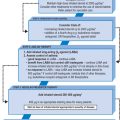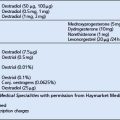CHAPTER 20 TERMINAL CARE
BREAKING BAD NEWS
PAIN
Ask patients if they have pain, rather than waiting for them to volunteer it.
Management of pain relief in palliative care
Examples of useful analgesics
(See controlled drugs, p. 319.)
How to achieve the correct dose of opiate
Converting oral morphine solution to MST
Converting oral morphine to diamorphine
CONTROLLED DRUGS
For choices of drugs and dosages, see pain, p. 317.
Legal aspects
For prescribing opiates on the prescription form FP10 a few simple rules have to be followed:
For carrying controlled drugs in the black bag there are a few legal requirements:
Ethical considerations
VOMITING
Nausea and vomiting are common symptoms in terminal care.
ANXIETY
Management
CONSTIPATION
Causes of constipation in the terminally ill include:
Management
COUGH
DEPRESSION
All terminally ill patients manifest depression at some stage of their illness. For depression in general, see p. 292.
Features of depression peculiar to terminal illness
DYSPNOEA
DEATH
Administration
Forms
Cremation form.
The cremation certificate can be filled in only by doctors who have seen the dead body. Two doctors are required. The Part B doctor must have been fully registered for 5 years or more, must be from a different practice and must have discussed the death with the Part A doctor. The doctor completing Part B must also discuss the circumstances of the patient’s death with either a relative or a member of the nursing team who was involved in the patient’s final illness. The cremation form should be given to the undertaker.




